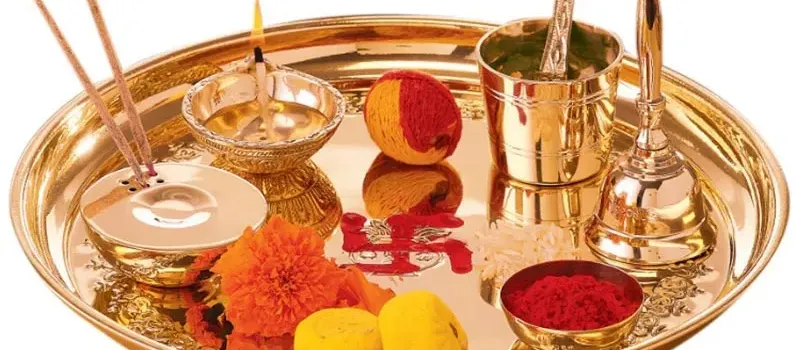The Essential Guide to Pooja Samagri: Everything You Need to Know

Buy Minimum of Rs. 499 to Get Free Shipping on Cash on Delivery

When it comes to performing poojas, having the right pooja samagri is essential. Pooja samagri refers to the items and materials required for conducting religious rituals and ceremonies in Hinduism. These items hold great significance as they help create a sacred environment and facilitate the connection between the devotee and the divine.
Before we delve into the details of each item, let's first understand the five essential pooja samagri:
Incense sticks play a crucial role in Hindu rituals. They are used to create a pleasant fragrance that purifies the environment and pleases the deities. The aroma of incense sticks is believed to attract positive energies and remove negative energies.
A lamp, also known as diya, holds deep spiritual significance in Hinduism. It represents the presence of light, knowledge, and enlightenment. Lighting a diya during poojas symbolizes the eradication of darkness and the awakening of the inner self.
Flowers are considered sacred in Hinduism and are an integral part of pooja rituals. They are offered to the deities as a symbol of devotion, love, and purity. Different flowers hold different meanings and are chosen based on their significance in specific rituals.
The sacred thread, also known as raksha sutra or moli, is a symbol of protection and spiritual connection. It is tied around the wrist or worn as a necklace during poojas. The thread is believed to ward off negative energies and bring blessings from the divine.
Sandalwood paste holds immense importance in Hindu rituals. It is used to make tilak marks on the forehead, neck, or other parts of the body. The fragrance of sandalwood is believed to calm the mind, enhance focus, and create a serene atmosphere during poojas.
While the above-mentioned five pooja samagri items are essential, there are several additional items that can enhance your pooja experience:
A pooja thali is a decorative plate or tray used to hold all the pooja samagri items. It adds a touch of elegance and makes the ritual more organized. Pooja thalis are available in various materials like brass, silver, and stainless steel.
Camphor is often used during aarti, a devotional ritual involving the waving of a lamp in front of the deity. It is burned to produce a fragrant smoke that is believed to ward off evil spirits and purify the surroundings.
A coconut is considered a divine fruit in Hinduism and is often offered during poojas. It represents purity, fertility, and prosperity. Breaking a coconut is believed to symbolize breaking the ego and offering oneself completely to the divine.
A bell is rung before and after the pooja to invoke the presence of the divine and seek blessings. The sound of the bell is believed to dispel negative energies and create a harmonious atmosphere.
The conch shell holds great significance in Hindu rituals and is blown before the start of a pooja. It is believed to purify the environment, awaken spiritual energy, and create a sense of auspiciousness.
Now that you know the essential and additional pooja samagri items, you might be wondering where to find high-quality products. There are several reliable online platforms and local stores that offer a wide range of pooja samagri. Some popular options include:
Using traditional pooja samagri holds numerous benefits, both spiritual and practical:
Pooja samagri plays a vital role in Hindu rituals, helping create a sacred atmosphere and establishing a connection with the divine. The five essential pooja samagri items, along with additional items, enhance the overall pooja experience. By using traditional samagri, you not only uphold cultural traditions but also reap spiritual benefits. So, gather the necessary samagri and embark on a spiritual journey through the beautiful practice of pooja.